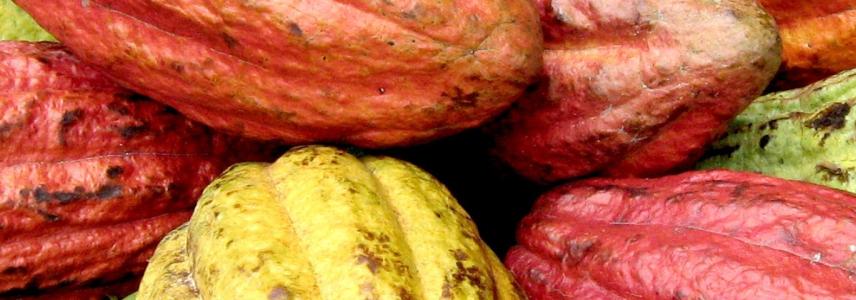5 tips for the cocoa sector to meet the EUDR

The EU's Regulation on Deforestation-free Products (EUDR) ensures that products sold in the European Union (EU) do not come from deforested land. The aim is to reduce global deforestation and climate change impacts. So, certain products must be traceable. If you export cocoa to the EU, read our tips to meet regulations.
This regulation is part of the EU Green Deal and addresses human rights and environmental issues in agricultural supply chains. The EU expects fair cocoa pricing to support living incomes while combating cocoa-related deforestation.
1. Familiarise yourself with the EUDR
From 30 December 2025, producers and exporters can only sell cocoa and cocoa products on the EU market if grown in a non-deforested area. Buyers and importers in the EU must provide geolocation data for the cocoa plots. They can use polygon mapping for plots over 4 hectares and GPS coordinates for smaller ones. Non-compliance can result in:
- Shipment bans;
- Fines up to 4% of your turnover; and
- Exclusion from public funding or contracts.
The EUDR Cocoa Factsheet provides detailed guidance for cocoa exporters on meeting the EUDR. This guidance helps build trust with existing buyers and opens opportunities to attract new buyers.
2. Know the required documentations
Knowing what documentation you need for due diligence is essential to provide buyers with the correct information. Most important are Risk mitigation, Risk assessment reports and Geolocations. Cocoa exporters should collect all needed EUDR compliance documentation to:
- Aid buyers;
- Build trust; and
- Attract new business.
It is wise for companies to support farmer and producer organisations in collecting and keeping detailed operational information. Companies should help gather and verify geolocation data for cocoa plots and share this data with producers to enhance market access.
3. Work with relevant tools, resources and other organisations
Many tools and resources are available to help you comply. Free tools for geolocation and risk analysis include smartphone apps like OpenStreetMap. For example, Plant-for-the-Planet has launched a free mobile app called Tracer in Ghana. The app helps farmers and cooperatives to:
- Geo-trace their cocoa farms; and
- Provide them with information about the EUDR.
You can also use handheld global navigation satellite system (GNSS) devices with a solid signal.
Also, consider working with service providers for specialised help, such as:
- Beyco, Farmforce;
- Frontierra;
- Global Traceability;
- Koltiva;
- Nadar;
- Satelligence;
- Sourcetrace;
- Taroworks; and
- Terra-i+.
Voluntary sustainability schemes like Rainforest Alliance and Fairtrade also assist with EURD compliance but do not replace EUDR obligations. You can access several online courses, such as training videos and webinars by:
OECD and FAO publications are also good resources, such as the Business Handbook on Deforestation and Due Diligence in Agricultural Supply Chains. Also, the Sustainable Cocoa Initiative supports the EUDR by targeting deforestation and addressing traceability issues.
4. Use EUDR to gain a competitive advantage
Providing EUDR documentation is a service that can greatly benefit your EU buyers. It sets you apart from competitors and strengthens your relationship with buyers. Having readily available due diligence and traceability data can create new opportunities and grow your customer base. Exporters who quickly give required information to support EU buyers or importers can build trust and maintain business relationships. Also, exporters should expect support from EU traders, including:
- Capacity building for cocoa farmers;
- Courses on EUDR requirements; and
- Risk-reducing measures to make transactions smoother.
5. Be aware of a costly process
Ensuring that the coffee you sell meets the EUDR regulations will cost money. This includes costs of:
- Geolocation mapping;
- Data collection; and
- Traceability management.
At the moment, it is unclear how much full EUDR compliance will cost because the EUDR has yet to come into effect. But it is important to estimate the costs of supporting cocoa producers you buy from or farmers you work with and factor in fair pricing. Also consider investment and ongoing costs, such as documentation and audit fees.
Learn more
You can find more tips and information on EUDR in our Tips on How to Become EUDR Compliant in Cocoa. Or read our studies on exporting cocoa to the EU.
Amonarmah Consults wrote this news article for CBI.
Please review our market information disclaimer.
Stay Informed
To stay informed on the latest developments in the cocoa and cocoa product sector, subscribe to our newsletter.